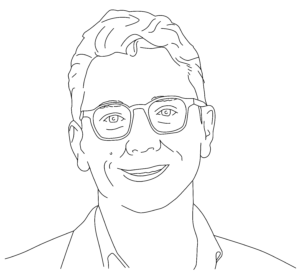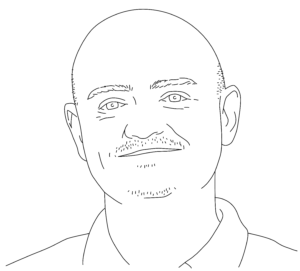How to disrupt policy and enable collective intelligence – for people and place – by asking the questions that matter most.
Starting policy analysis with the data currently available often limits the questions we ask or pushes us to ask the wrong questions. By starting with the daily news cycle, reporters and editors are driven to discuss the events and issues of the day, not always what matters to communities and for policy reform.
But what happens when we start with the voices and perspectives of individuals and communities, informed by research insights? Does the way we identify and prioritise questions enable transformative insights through collective intelligence and thus different forums for policy action? If we don’t do that, it risks leaving us ill-equipped to respond to complex social challenges – or worse, with blunt instruments pointed at the wrong issues.
At present, Australia does not have a platform to facilitate dynamic public participation that consolidates and prioritises questions about breaking cycles of disadvantage. Can a question platform encourage shared agendas through mutual curiosity, gathering research and community ideas to accelerate public debate and inform policy experimentation? The 100 Questions initiative, for instance, is one comparative global attempt to generate a collective intelligence platform.
Over nine months, The Conversation experimented with another approach, publishing a series of articles considering the overarching question of how and when we are effectively breaking the cycle of disadvantage and promoting healthy communities where all children have access to the opportunities they want and need to thrive. The issues underpinning these stories took shape during and immediately after the 2022 federal election, during which political parties competed for news coverage and community attention, and issues and ideas were currency of public debate.
With over 60 articles published in the series and numerous others touching on related issues, the research and ideas which emerge in The Conversation serve as a rich resource which we can mine for the most pressing questions for public policy. The collection covered a wide range of policy-relevant and forward-looking questions, from how young people shape policy design through to “invisible” disasters like climbing temperatures and energy poverty. Here are five ideas and new questions which we can collectively take into 2023.
1. We can improve the way youth and those with lived expertise are engaged in policymaking
Taking seriously the experience of poverty reported by children reveals three themes: children miss out on the material basics far too often, and this is a structural and public problem, not an individual one; poverty limits children’s ability to participate in activities and access services, and; poverty eats away at time in which children form their most important relationships.
If we can better understand this experience, then it follows that we can better tailor solutions to reduce need, support activities and services, and enable supportive relationships. However, while we need to listen to those with lived experience, in the case of child family violence we also need to be careful that the court system does not silence or retraumatise them.
Encouragingly, youth advisory committees and youth surveys are increasingly being used to track youth priorities, identified in the youth barometer as improved education and future employment, climate change, well-being and mental health. Incorporating the priorities of young people should lead towards the improved long-term planning necessary for systemic shifts.
In 2023, then, a key question is: How do we expand the mechanisms and methods used to engage youth and communities authentically and systematically in the funding and policymaking processes?
2. By understanding how one life event or shared experience shapes the next, we can target, sequence and prioritise what matters most for children earlier in their lives
Our parents, income and place of residence remain key factors in how and when we access opportunities across our life journey. The public policy challenge is to move away from reactive policies towards ones which create greater access to opportunities and stem identified failures in our current systems.
A range of factors can be used as predictors, many of which build from literature about the social determinants of health and or use longitudinal data to search for patterns across our life course. For instance, children who experience out of home care support are more likely to miss vital school days, leading to inequitable educational outcomes – yet we do not have effective collaboration between education and child protection systems to improve attendance rates. In a similar vein, there is a direct correlation between a school’s relative educational advantage and the students’ success in running carnivals in Tasmania, demonstrating a need for greater funding for sporting infrastructure for schools in low socio-economic areas.
There is evidence linking a child’s brain development with where they live, advancing our understanding of the ways our geographic and community context shape emotional, social and physical development – both positively and negatively. Supporting connected communities and neighbourhoods, where people and institutions look after each other, may be one of the best things we can do to create positive pathways for our children. We can improve the way that the care economy measures emotional, social and relational wellbeing, particularly as part of delivery and accountability of support services.
A key question for 2023 should be: How do we increasingly act upon the predictive nature of certain life events and create programs and approaches which change those likelihoods?
3. We can improve the way that the care economy measures emotional, social and relational wellbeing, particularly in the delivery and accountability of support services
When asked, LGBTQI+ communities, people from linguistically and culturally diverse communities, people with disabilities, and the elderly reveal particularly acute forms of exclusion, occasionally manifesting in adverse mental health and diminished productivity. A cross-sectoral emphasis on improving relational capital, including preventing negative dynamics, such as invisible bullying, and increasing the positive levers – such as drawing on creative pursuits like painting, singing or dancing – supports flourishing communities.
We might be able to achieve this by reducing skills gaps and improving jobs in the care economy. In the mental health system, for instance, the “inverse case law” exists, whereby those who most need support are often last to receive it, with one study focusing specifically on middle aged women. Further, conditional welfare systems create “performative vulnerability”, undermining care when seeking to tick qualification boxes required to access support.
Building on this, a focus for 2023 should be: How can we better integrate socio-emotional and relational wellbeing into the provision of care services to empower those seeking access to opportunities?
4. There are clear benefits in shifting to strengths-based framings and measures, including in the media’s coverage of issues of equity, opportunity and disadvantage
There is no shortage of case studies highlighting the importance of using strengths-based approaches, including how institutions’ assessment and classification criteria can undermine service supports, the importance of changing the research question towards one focused on youth’s positive behaviours, and how communities are using social media to challenge negative narratives.
Coverage of First Nations’ communities over decades shows a cycle of pressure build-up and then release in public discourse around 26 January each year. However, this pressure is absent on the floor of our parliament. This year it is likely Australian voters will vote on whether to enshrine an Indigenous Voice to Parliament in the Constitution. How we discuss the Voice to Parliament will be material to our equitable shared future.
In 2023, we should be asking: How do we deepen our understanding of the practices and moments that drive attentive and responsive media coverage and parliamentary debate to voices of First Nations people and communities experiencing social exclusion? And how do we track competing framing to inform productive social debate?
5. The COVID-19 pandemic reinforced that disadvantage is intersectional and compounding. And just as disadvantage is cross-cutting, so too must its solutions be.
Older Australians with lower incomes or wealth face many challenges to “successful ageing”. Both winter and summer bring similar problems: trade-offs between the energy use required to sustain wellbeing and prevent illness, and energy poverty. In lower-income suburbs across Australian cities, climate change and rapidly increasing average temperatures threaten to compound and lock in disadvantage. Holistic and social approaches to “climate readiness” and adaptation – including drawing on Indigenous Australians’ invaluable traditional knowledge of living well in Australia’s hot temperatures – represent an opportunity to make our cities and communities more equitable. Similarly, individuals leaving the justice system need better housing support, not in the form of rental assistance, but in stability of social housing options and critical wraparound supports like literacy training, access to identification documents and professional advocates. The incarceration-homelessness pathway remains severe, particularly for women and people with disabilities.
For the year ahead, the final vital question for public policy is: How does understanding the intersectional and compounding dynamics of recidivism change the supports we provide for children, youth, and the post-release pathways that link dimensions of an individual’s life, family and community?
This article is based on one originally published by the Paul Ramsay Foundation and appears here with permission. It has been adapted for The Policymaker by the authors.
Dr Alex Fischer is Head of Research at the Paul Ramsay Foundation.
Nick Davis is Partnerships Officer at the Paul Ramsay Foundation.
Image credit: Melponemen/Getty Images












